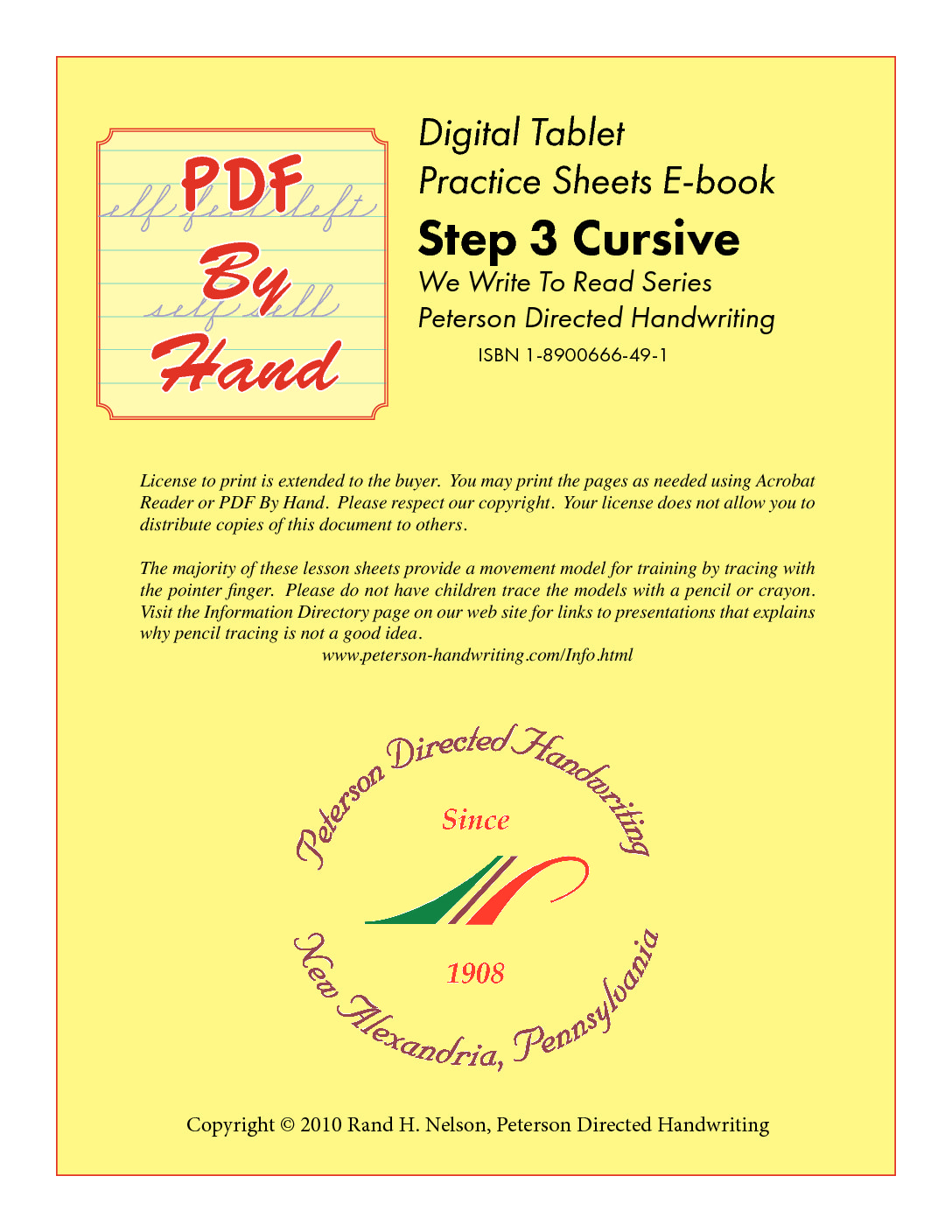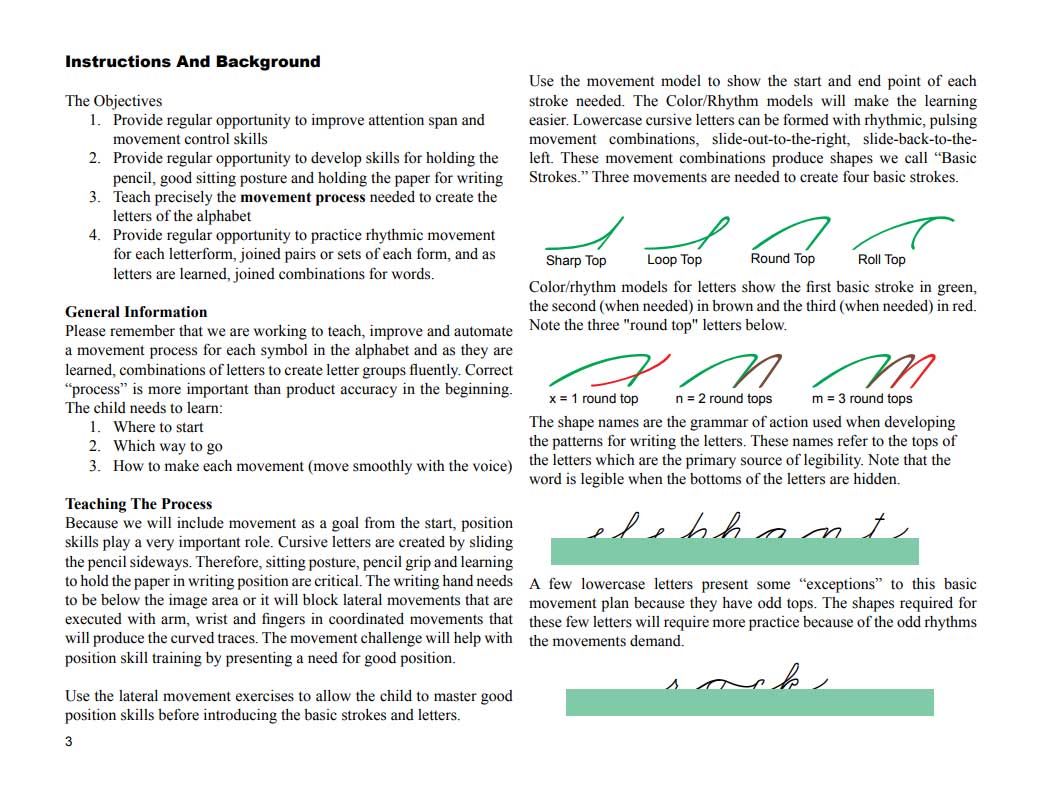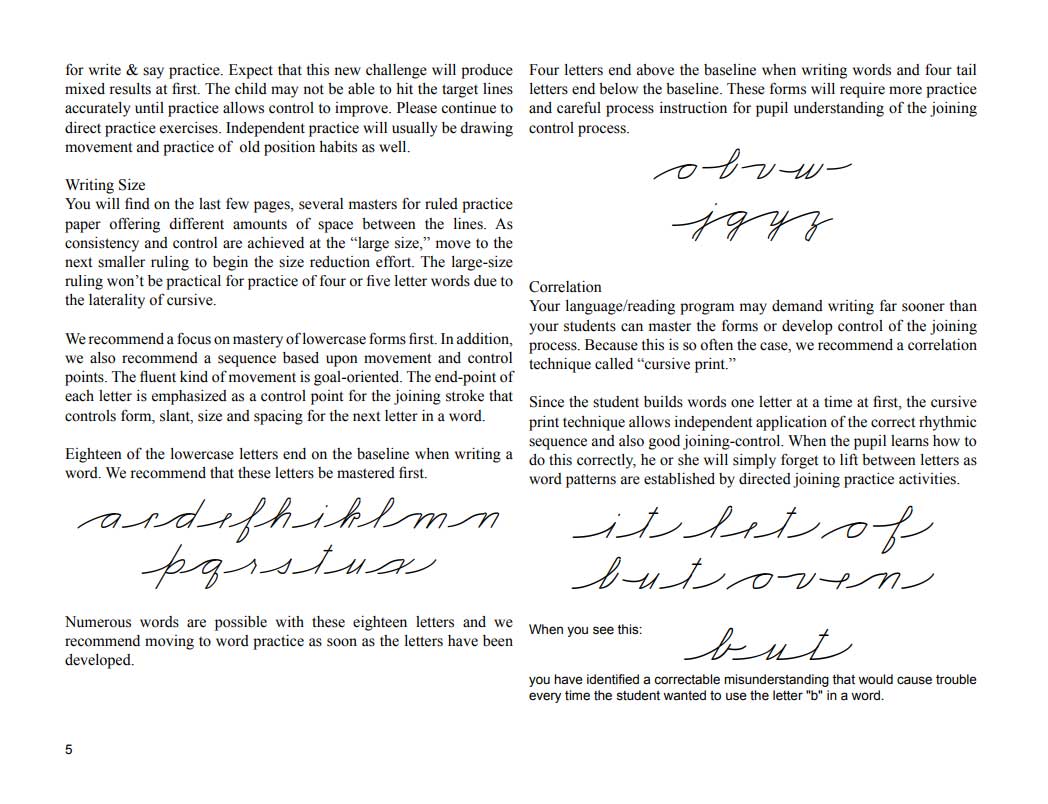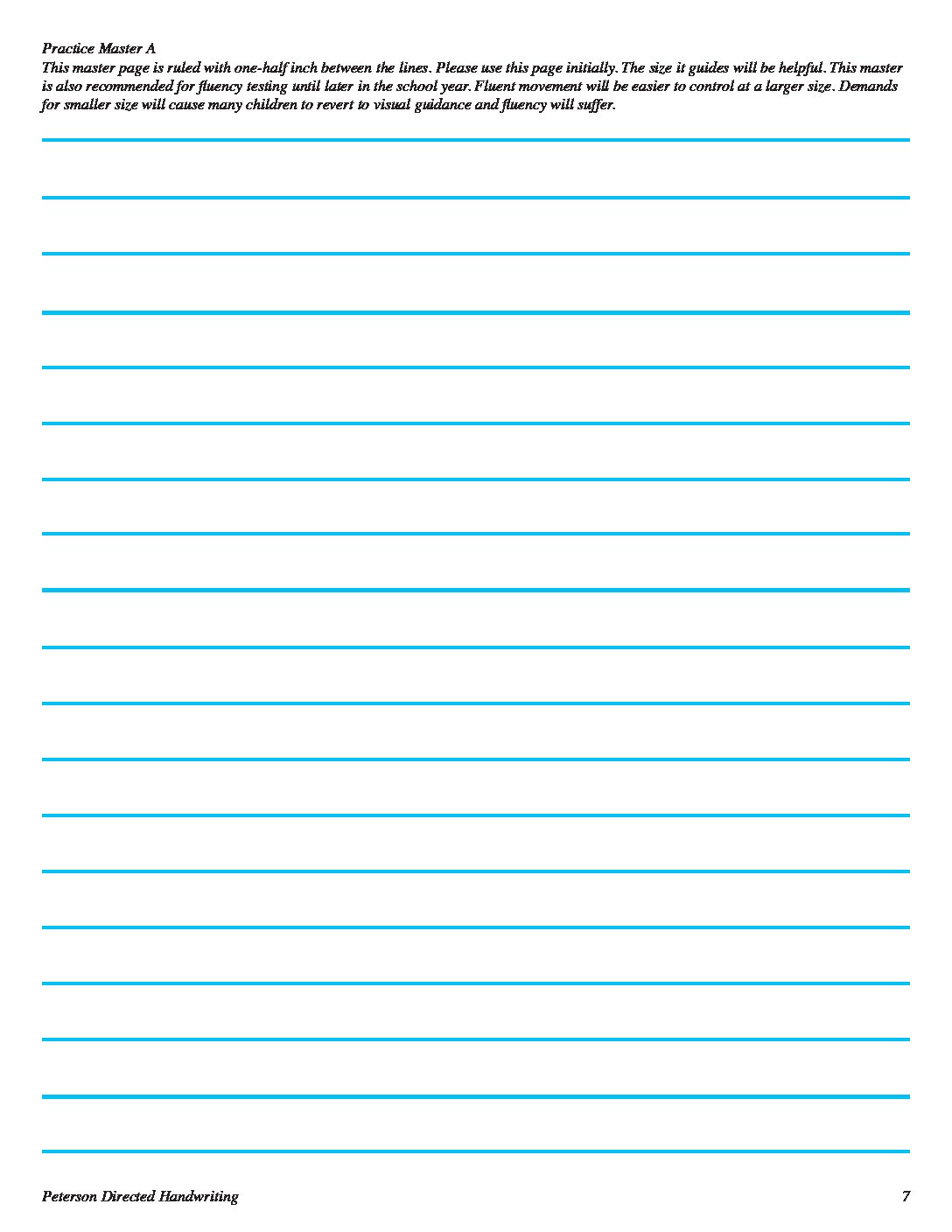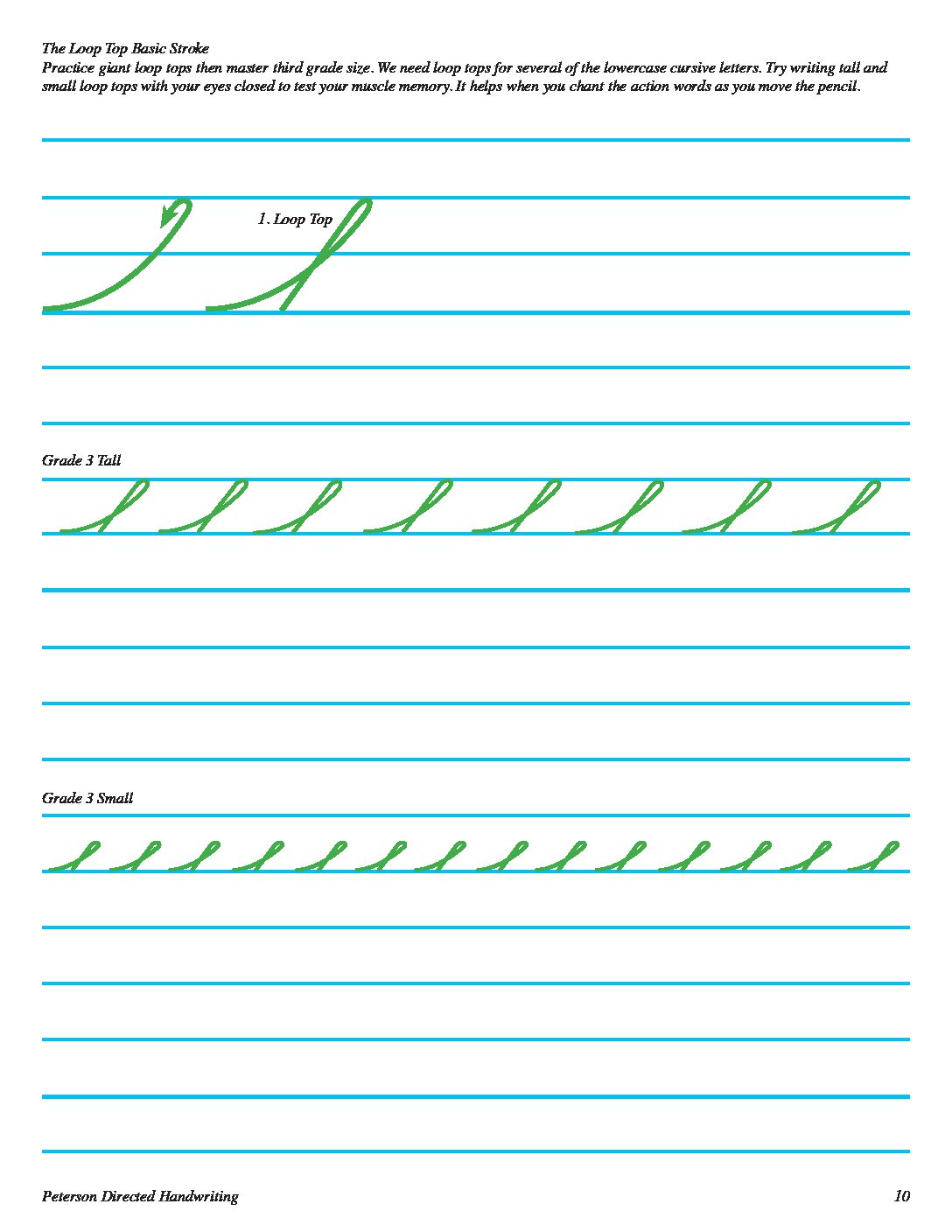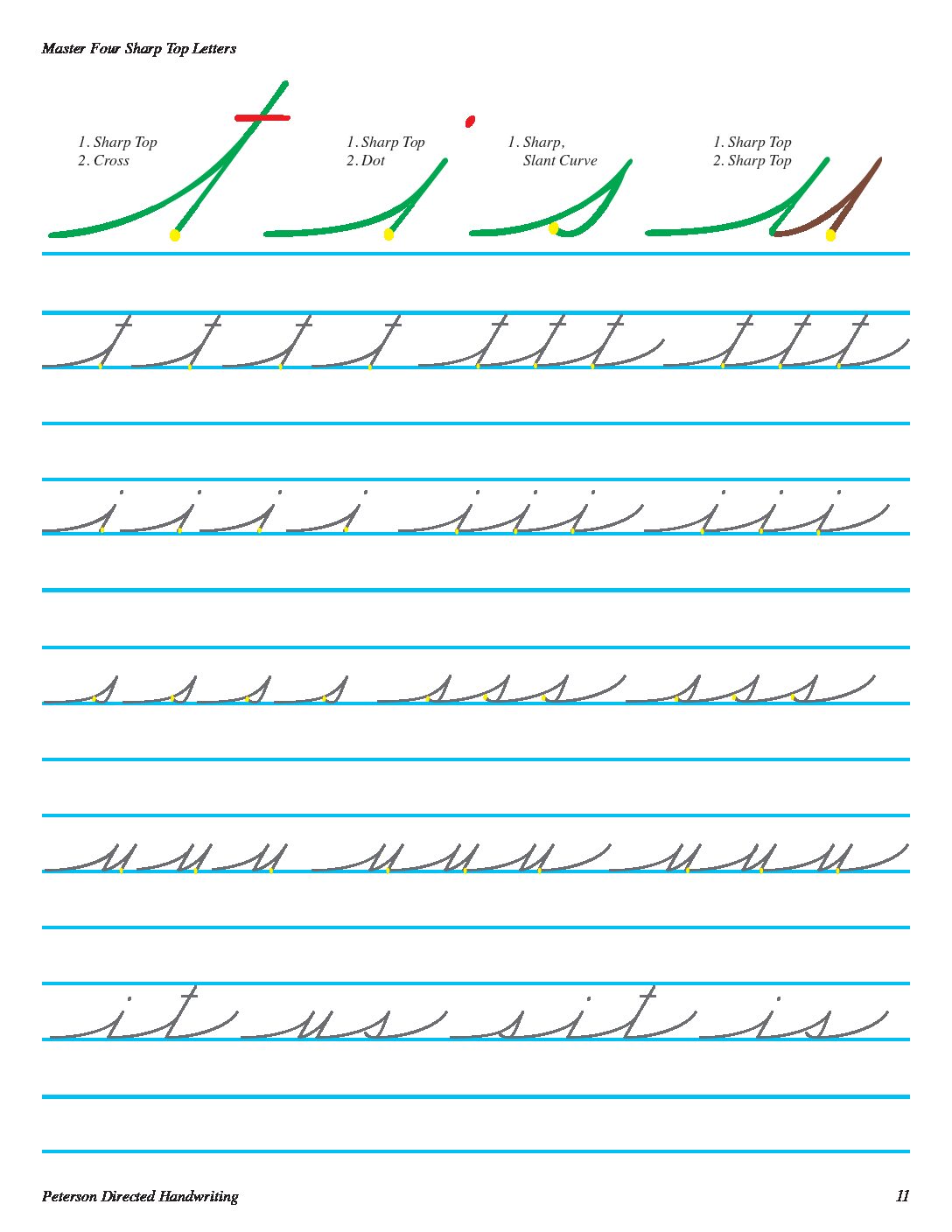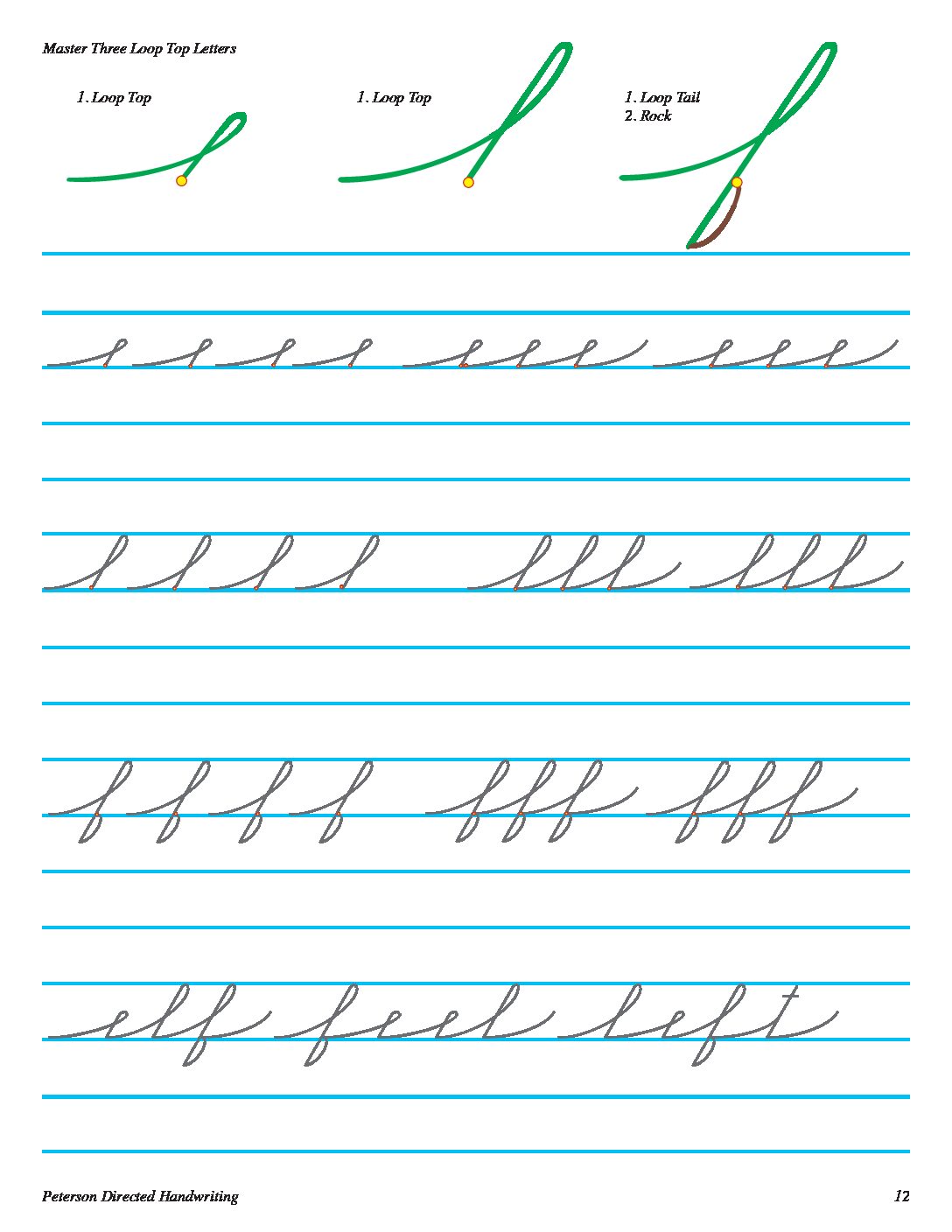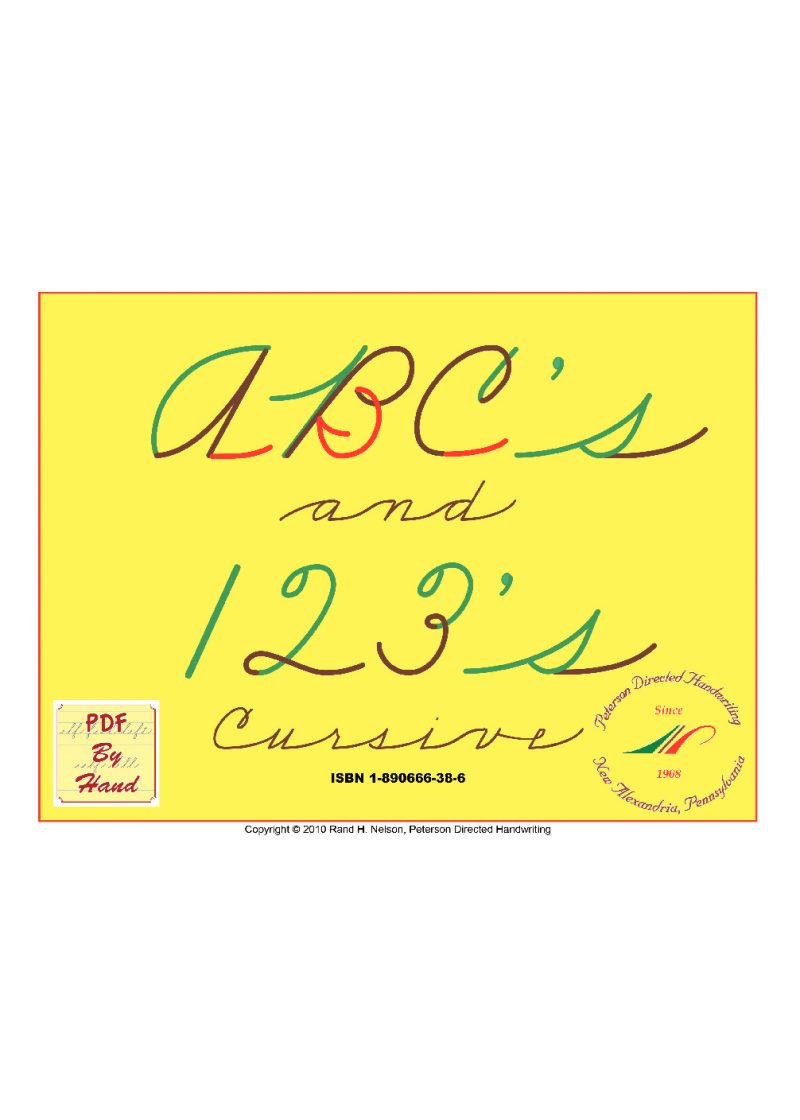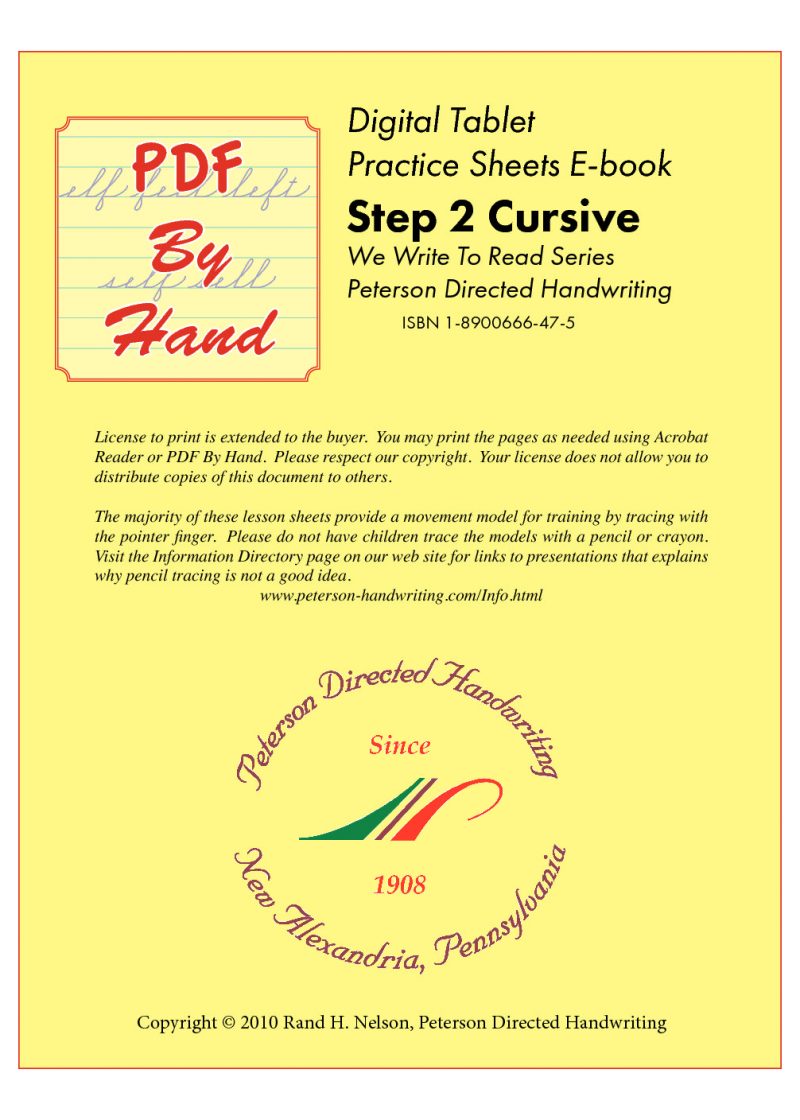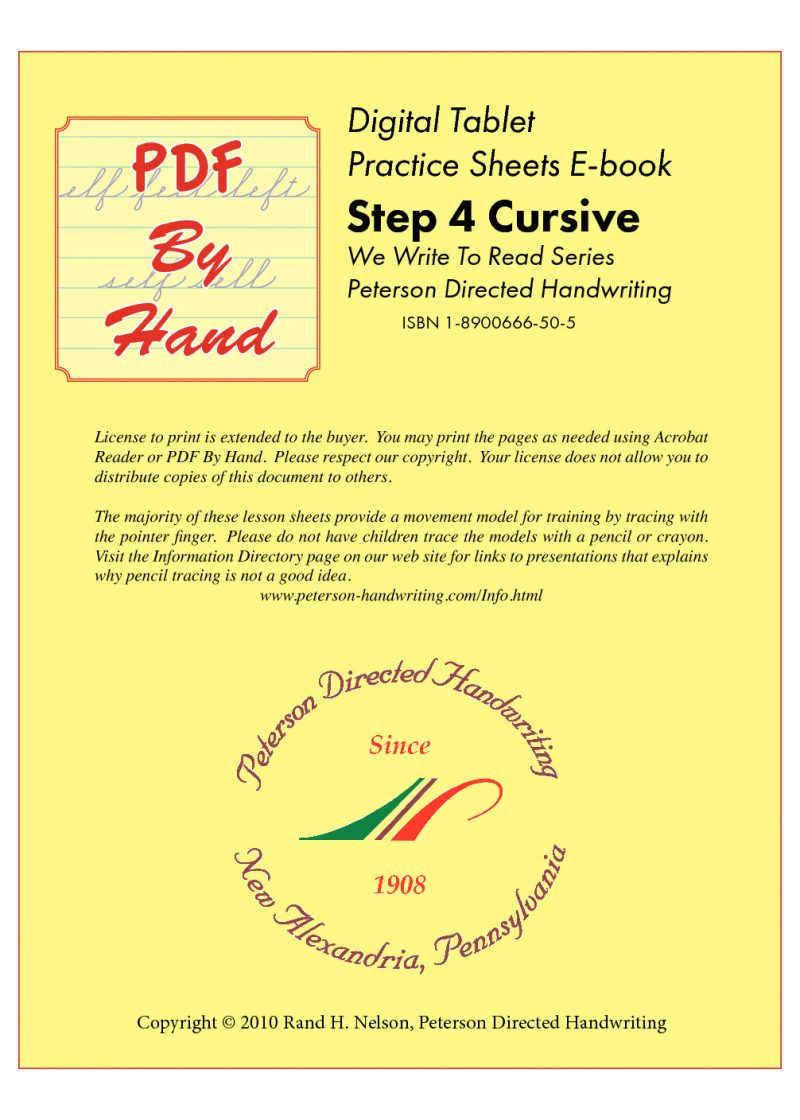E-Workbook – Cursive Step 3 Individual License
$39.99
Cursive Step 3 provides 55 pages including teacher information. PRACTICE pages provide models and practice space. The page sequence is based upon related movements and is designed for use in a daily exercise session aimed at learning to control the movements at a reduced size. Regular short daily exercise sessions will bring far better success than longer sessions widely spaced. Please keep in mind that the size reduction goal demands that new muscle groups learn to control the movements.
PLEASE DO NOT HAVE CHILDREN TRACE MODELS WITH A PENCIL OR CRAYON. Making lines match blocks the fluent movement we seek to establish. The transfer of control information from gross to fine levels can also be blocked by poor position habits. Take the directed practice strategy into your spelling and vocabulary lessons to greatly enhance the learning rate for new words.
Cursive strokes are produced with lateral movements. Lateral movements are controlled by the wrist and arm. Therefore, position skills are critical for control of fluent movement. Recite the Action Words, Count or Colors aloud and move with the voice. The challenge to move smoothly with the vocal during exercises greatly enhances the internalization of control information.
Recite and write in the air with various muscle groups for initial gross patterning and to get the students moving with the voices. Finger-trace the movement model. Then pick up the pencil to Write And Say on the practice page. The goal is to move the pencil with the voice. The voice indicates that the child is practicing the right kind of movement. Count or spell aloud to include movement in word practice.
The pupil that is unable to recite while writing needs help to overcome the movement problem. To move smoothly with the voice, the child must learn to look ahead to goals. The color separations in the movement models enhance that learning for letters. Exaggeration of joining control points in our models helps with word patterning. Control of fluent movement improves with rhythmic practice resulting in more accurate product. Independent practice rarely includes smooth movement as a goal. Until the patterns are well established, practice must be “directed” to include the fluency challenge.

